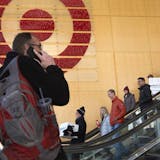Editor's note: Harold Gifford landed the Lakers' plane in a cornfield near Carroll, Iowa, where Raptors coach Nick Nurse is from. The two of them spent time talking at the game on Saturday at Target Center. Gifford was the subject of this story by staff writer Jerry Zgoda, published in the Star Tribune on Jan. 18, 2010.
He awoke Sunday morning at his Woodbury home, collected his overnight bag and then, as all flyers habitually do, checked the weather forecast. Then Harold Gifford, 86, once again charted his course and set out for little Carroll, Iowa, 50 years since he last visited.
This time, it's his intended destination. This time, he expects to arrive Monday welcomed in splendid sunshine.
"This time, I'm going by car," he said. Fifty years ago, Gifford copiloted an ancient chartered aircraft carrying home the Minneapolis Lakers basketball team in a storm from a game in St. Louis. Until that night, that Lakers team considered itself anything but a winner.
Six seasons after legendary big man George Mikan led the franchise to the last of four NBA titles, these Lakers were on their way to a 25-50 regular season.
They also were on their way out of town, bound with young star Elgin Baylor for a franchise move to lovely Los Angeles that very next summer.
That day began like so many others — with a loss, to the St. Louis Hawks — and ended with a night unlike any other for 22 people aboard.
Blinded by an electrical failure and a raging blizzard, their chartered plane flew high, frozen and by the stars and the moon for nearly five hours before it made a forced, off-course, fabulous landing into an Iowa cornfield.



